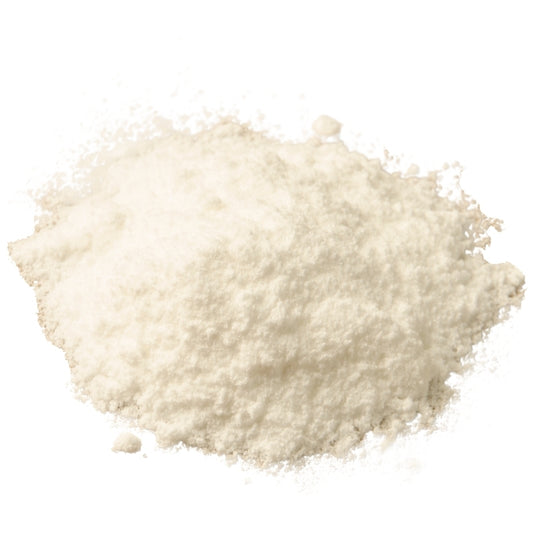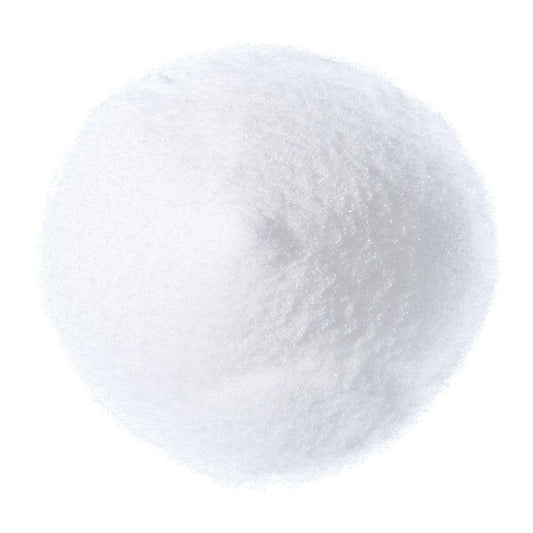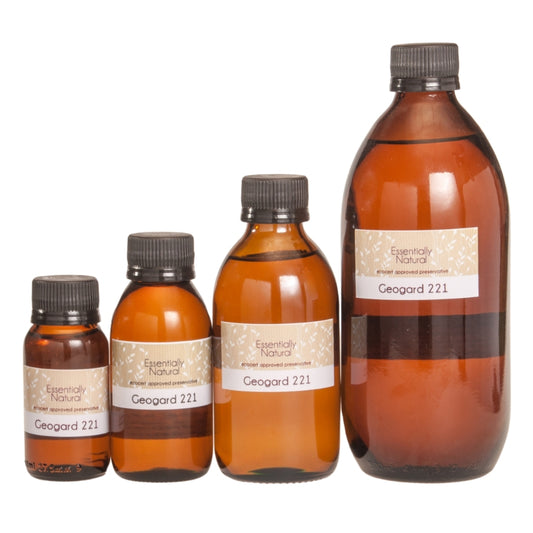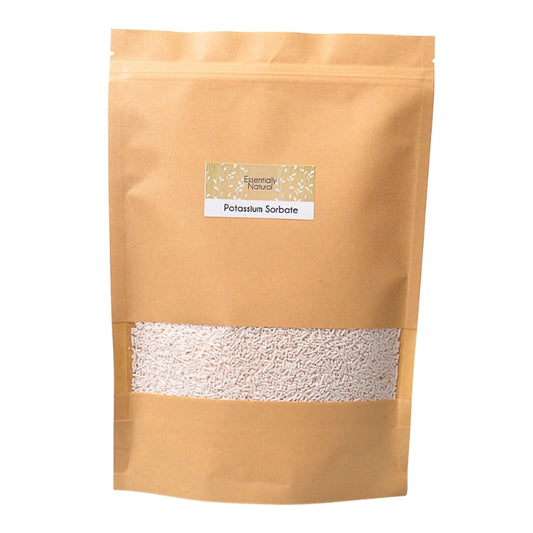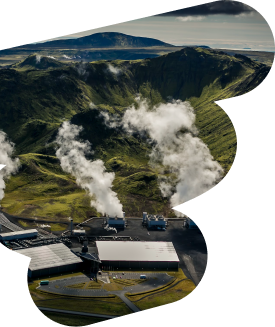
A Quick Guide To Preservatives
Aiden Van WykIn this installment of our Quick Guide series, we discuss a very important topic, preservatives and what preservatives to use in cosmetics. Let's jump right in.
What Is A Preservative & Why Do I Need One?
A preservative is an ingredient that is added to formulas to prevent and delay the formation of fungi, yeast, bacteria and mold and to extend the shelf life of your product.
There are two kinds of spoiling that might happen to your products which we are looking to prevent.
- Rancidity - only affects oils and butters -This takes a very long time to set in however, and as long as you store your oils in a cool, dry dark place you should be good for at least 2 years. Adding a preservative will not help you here, so we don't worry too much about this. The more immediate concern is:
- Microbial Activity (basically, living organisms) such as mold, yeast, bacteria and fungi that can proliferate in products that contain water or water-based substances. If your product contains aqueous ingredients then it is imperative that you add a broad spectrum preservative.
When Do I need To Add A Preservative To My Products?
The point of a preservative is to prevent any bacteria, mold and fungal growth and to lengthen the shelf life of your products.
To determine if you require a preservative in your product, ask yourself these questions:
- Does my product contain water or aqueous substances?
- Will it come into contact with water?
- Will I want to keep it for more than 2 days?
If your answer to either of these questions is yes, then you need a preservative.
What Are Aqueous Ingredients?
An aqueous phase or aqueous ingredients are any water-based ingredients. These include water, obviously, witch hazel, hydrosols, ingredients that require water to dissolve into, and actives such as aloe vera gel, acids, botanicals etc.
When Do I Not Need A Preservative?
If your product is purely oil based or contains non aqueous ingredients then you don't require a preservative.
Some examples where you don't need a preservative are: oil blends, essential oil blends, body butters which are purely oil based, lip balms and massage oils. You also don't need a preservative in soaps made with lye, as the extremely caustic conditions prevent any microbial growth.
Do I Need To Add A Preservative If I Plan To Store My Product In The Fridge?
How long would you store freshly made food in the fridge for? 3-5 days maybe? That's about how long you can store your DIY products. So if you are planning to use them up within a few days then you can get away without using a preservative. Otherwise, use one.
How Much Preservative Do I Use?
Preservatives are used in very small amounts, typically anywhere from 0.5 - 2% of your formula. Check the usage instructions for your preservative to see how much to use.
I like to keep the usage amounts in % form so it is easy to calculate depending on how much product you are making. For instance if your ingredients come to 100ml and you need 1% preservative then you will use 1ml preservative.
What Can I Use In Place Of A Preservative?
You can't substitute a preservative. If you don't have one, please purchase one, or rather make a different product that does not contain aqueous components.
Are Preservatives Bad for You?
Like various products over the decades, preservatives have gotten themselves a bit of a bad rap.
Which Preservatives are Bad For You?
Studies have shown that substances which release formaldehydes and parabens can be harmful if exposure is sustained over long periods of time. Some preservatives do contain these substances and we call them 'nasty' chemicals (to distinguish between other chemicals that are perfectly fine: remember everything is made up of chemicals). These are the preservatives to avoid.
But not all preservatives are created equal.
Which Preservatives are Safe?
Preservatives that are safe for use in natural and organic cosmetics are less likely to give anyone a reaction and are made of substances which are natural, and so are considered 'safer'. Preservatives are very necessary and all preservatives on the market will have been tested for safety.
Some people may have a bad reaction to a certain preservative in the same way that someone who is allergic to peanuts will react badly to peanuts. It doesn't make peanuts unsafe. So people should try to avoid those preservatives which are produced from nasty chemicals in order to reduce the potential for a bad reaction or any possible exposure to bad substances.
Note: We only stock ones that are considered safe for natural and organic cosmetics. All the preservatives you see on our website are considered safe.
Are Preservatives Vegan, GMO-free?
If a substance doesn't contain animal-derived components then it will be vegan. Preservatives are typically produced from plant acids or synthetically in a lab from select chemicals and therefore will be vegan friendly.
Plant acids used in certain natural preservatives are produced in nature, but more often than not products for mass production such as preservatives are now produced synthetically in labs.
This isn't a bad thing as synthetic products such as this are nature identical, meaning they are identical to the components found in nature on a chemical level. Plus they won't be derived from a potentially genetically modified crop and so are classified as non-GMO.
What Types Of Preservatives Are There?
We've compiled a handy list of the preservatives for cosmetics and hair products we stock as well as their properties.
Liquid preservatives
- Geogard 221 is our best selling liquid broad spectrum preservative and it is ECOCERT approved for use in natural and organic formulas. It is added to the aqueous phase of the formula, or can be blended in right at the end. Keep your formula in a pH range of 2-7 for best results.
- Ingredients are: dehydroacetic acid and benzyl alcohol in liquid form (It is dehydroacetic acid based.)
- How to use: 0.2 - 2% added to the aqueous phase
- Geogard 221 will be the preservative I most commonly recommend to people.
- Euxyl 940 blend PE9010 is another liquid broad spectrum preservative. It is phenoxyethanol based and you add it to your oil phase or at the end of the formulation. It is stable in all pH's up to 12 and temperatures up to 120 C.
- Ingredients are phenoxyethanol and ethylhexylglycerin.
- How to use: 0.5 - 1%, up to a maximum of 1.1%.
- Soluble in oil, propylene glycol and propanediol 1,3. Low solubility in water.
- Vitamin E oil is a well known vitamin for skin and is used in all kinds of body products. It is often touted as a natural preservative, but it is in fact not a preservative at all, rather an antioxidant. If you want to use it in conjunction (or just as part of your formula) with another preservative then you may. It has strong antioxidant properties and may help the overall formula.
Powder/solid preservatives
- Geogard Ultra is a relative of Geogard 221 but in powder form. It is also broad spectrum, ECOCERT approved and globally accepted. It is soluble in water, propylene glycol, glycerin and mineral oil, but not in carrier oils or essential oils. Keep your product in the 3-7 pH range for best results.
- Ingredients are gluconolactone and sodium benzoate in powder form. The key ingredient is benzoate which is an organic acid. Avoid use in products where citric acid and ascorbic acid are used or the pH will get too low.
- How to use: 1-2%, diluted in the water phase.
- Potassium sorbate is not a broad spectrum preservative and is active against mold and yeast, but not against bacteria (hence it is most commonly used in food products and preserves where mold and yeast protection is of importance). It is most effective at low pH levels, specifically pH 3.
- How to use: Use at 0.1 - 0.5% in the aqueous phase. Heat stable up to 60 C.
- Citric acid is not considered a preservative in itself, but is often used alongside another preservative such as potassium sorbate. Citric acid is mostly used as a pH adjuster as it has a pH of around 2.2 which is very low. In low pH levels, certain preservatives do work better and yeast and mold activity can be limited.
- Ascorbic Acid/Vitamin C is another ingredient that is not actually a preservative but is often used in conjunction with preservatives. Like citric acid, it has a low pH and can be used as a pH adjuster. But it is mostly used in formulations for its skin benefits.
Note: We do too stock preservatives for Food and Sauces. They are namely:
- Sodium Benzoate: an anti-fungal agent.
- Potassium Sorbate: effective against mold and yeast.
What Do I Need To Consider When Choosing A Preservative? How Do I Choose The Right One?
Choosing the correct preservative to use is important. Always try to go for a broad spectrum preservative. Consider factors such as:
- Solubility: Will the preservative incorporate into my product? Some preservatives are water soluble such as Geogard 221 and Saliguard BDHA. Others are oil soluble such as the Euxyl 940.
- However if you have products that are either only water based, or only oil based, then you will need to use the preservative with the corresponding solubility. So an oil soluble preservative in an oil based product, and a water soluble preservative for a water based product.
- pH level: Does my product have an extreme pH and if so will the preservative survive in those conditions?
- Maximum Temperature: Does my product need to go through a heat phase? Will the preservative survive?
- Ingredient Compatibility: Does my formulation contain an ingredient that will render the preservative inactive or less effective?



